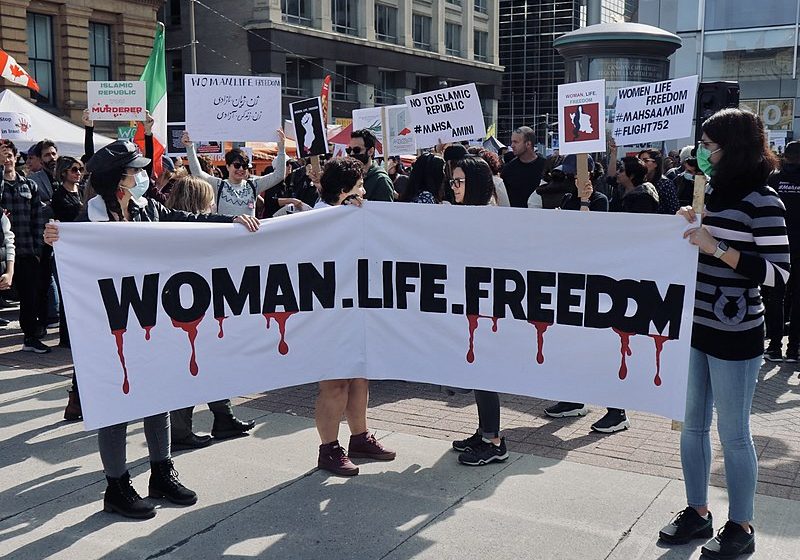Australia/Israel Review
A Wrestler’s Death and a Regime’s Future
Oct 5, 2020 | Michael Rubin

Early on the morning of Sept. 12, 2020, Iranian authorities in Shiraz hanged Navid Afkari, a 27-year-old wrestling champion whom a security court had sentenced to death for allegedly stabbing a man during unrest two years ago. Few believe there was merit to his conviction. Security forces detained and tortured Afkari, his brothers and hundreds of others for participating in the 2018 anti-government protests. Exculpatory evidence existed.
While his captors broadcast a forced confession, Afkari was able to smuggle out a recording professing his innocence. Ordinary Iranians are outraged not only by the brutality of Afkari’s execution, but by its speed. Iranian authorities killed Afkari before his family could visit him to say goodbye.
Over the course of its 41-year existence, the Islamic Republic has executed tens of thousands of prisoners and dissidents. The late Grand Ayatollah Hossein Ali Montazeri revealed in memoirs smuggled out of the country by his son that, in 1988 alone, his regime executed several thousand prisoners. Amnesty International recorded the names of at least 2,000 victims, but Iranian dissidents say that when peripheral provinces are counted, the number could be an order of magnitude higher.
While some diplomats and politicians counselling outreach to Iran may place hope in the Islamic Republic’s so-called reformers, a sad irony of Iranian political culture is that execution rates are higher under reformist or moderate administrations than under the so-called hardliners. While security agencies (rather than elected leaders) govern death squads and the penal system, Western officials tend to let their guard down and relieve pressure when trying to engage with their Iranian counterparts. Many of those killed have just become statistics given the sheer scale of Iranian human rights abuse, but Afkari’s murder may haunt the regime more than most.
The two most popular sports in Iran are wrestling and soccer. Both are widely followed across society but a class difference exists: Soccer is favoured by the educated and the elite, while wrestling is embraced more by the working class. Like all reactionary revolutionary regimes, the Islamic Republic dismisses those with a more internationalist outlook but bases its claims to legitimacy on the support of the poor and the working class.
Indeed, from the Islamic Revolution to the present day, Iran’s revolutionary authorities have infused their rhetoric with calls for social justice and addressing the have-nots and working-class within society. Afkari’s execution suggests, however, that the regime has abandoned the effort to win the hearts and minds of its core constituency, and instead believes it must rely on brute force.
On an international level, Afkari’s death will also have ramifications: International anti-Israel animus may have undercut past pressure on the International Olympic Committee and other sporting bodies to investigate or punish Iran for ordering its sportsmen to forfeit matches against athletes from the Jewish state. But executing a star athlete on such flimsy grounds is harder to ignore and may lead to Iran’s ban from international forums once the coronavirus pause is over.
Many diplomats, dignitaries and athletes also had asked Iran to put aside its death sentence, only to be ignored. Here, Supreme Leader Ali Khamenei’s disdain for these entreaties is reminiscent of the case of Farzad Bazoft.
Bazoft was a 31-year-old Iranian-British journalist whose work had appeared on the BBC and in London’s Observer. Arrested in September 1989 at a time when many Western diplomats continued to court Iraqi President Saddam Hussein as a moderate, Iraqi authorities subjected Bazoft to a show trial and sentenced him to death.
Pleas poured into Baghdad to spare Bazoft, but Saddam ignored them all. The Iraqi leader refused to even take phone calls from British Foreign Secretary Douglas Hurd. On March 15, 1990, Iraqi authorities executed Bazoft. To add insult to injury, the Iraqi government shipped Bazoft’s body back to Heathrow Airport with a terse statement, “Mrs. Thatcher wanted him. We’ve sent him in a box.” It was only then that the media, which had generally treated the Iraqi regime with kid gloves, definitively turned. U.S. News and World Report, for example, branded Saddam “The Most Dangerous Man in the World.”
Within Europe and the United States, on college campuses and in newsrooms and foreign ministries, academics, journalists and diplomats have embraced the idea that its critics fundamentally misunderstood Iran. They believed that reformers were both sincere and able to effect change. Afkari’s execution should put that notion to rest.
The regime response to the 2018 protests showed its fear of reform and accountability. Its execution of Afkari, meanwhile, shows it fears the Iranian people and any living heroes around which they might rally.
As Khamenei ages and transition looms, the Iranian regime rightly assumes that the next generation of Iranian leaders may arise from Iran’s prisons, much as they once did when transitions came to Chile, Czechoslovakia, India and South Africa. Khamenei may believe killing Afkari will intimidate those willing to take to the streets, but it instead shows just how weak, fearful, detached and dismissive Iran’s leaders have become.
Afkari may be gone, but historians may look at his execution as the day Khamenei ended the Iranian and Western hope for internal reform and instead signed the death warrant for the Islamic Republic.
Dr. Michael Rubin is a resident scholar at the American Enterprise Institute, where he specialises in Iran, Turkey, and the broader Middle East. Reprinted from the National Interest online (www.nationalinterest.org). © National Interest, reprinted by permission, all rights reserved. Read the original article on the National Interest website.
Tags: Iran






